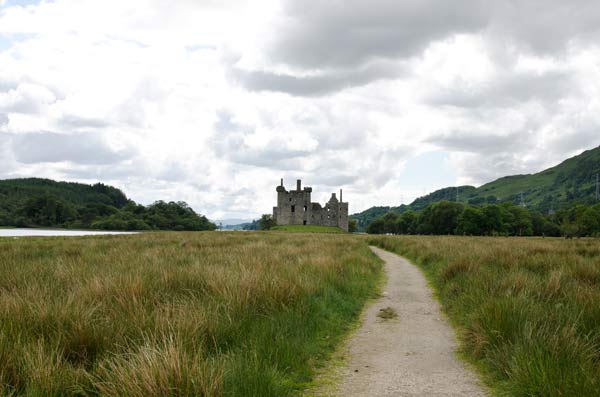
Where To Go In Scotland
Scotland is not a big country. It has mountains and lochs and castles and forested hills within easy reach, and even from coast to coast it is not more than a two-hour drive.
This is Kilchurn Castle in central Scotland at the north-east end of Loch Awe near the small village of Dalmally. To the west is the coast and the Isle of Mull.
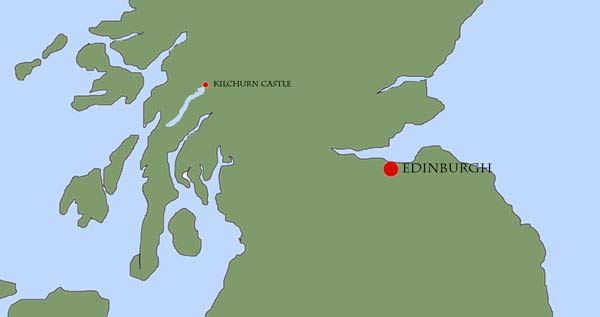
Set on a small mound against a backdrop of green hills, it seemed exactly right and fitting as our destination a couple of weeks ago following a meandering car drive from Edinburgh.
There were sheep grazing in the long grass on either side of the sandy path and in the distance I could see more sheep on the mound on which the castle is built.
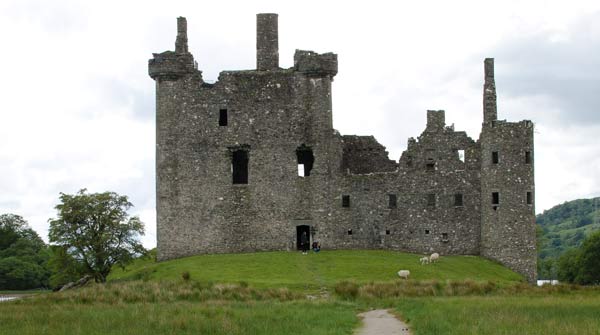
This photo is a crop of the full frame of the shot I took while we were still far down the path.
In my mind’s eye as we walked, I was happily composing the shot of the sheep on the mound that I would take when we got much nearer – except that a young boy jumped down onto the grass from one of the windows of the ruin and the sheep scattered.
And that is how I didn’t get the shot I wanted.
Ah, well – the castle and the sheep will have to wait for another visit some time in the future – perhaps when we visit the Isle of Mull.
A Powerful History
The castle was originally built on a small island in the loch, when the water level in the loch was higher. Then in 1817 the water level in the loch was lowered so now the castle sits on the little mound on the shore of the loch.
But Kilchurn Castle itself is six hundred years old.
It was built in the fourteen hundreds by Sir Colin Campbell, 1st of Glenorchy (as he was designated) who was granted (given) Glenorchy by his father in 1432.
He was also given lands by King James III – including the barony of Lawers, Perthshire – for his services in capturing Thomas Chalmer, one of the assassins of King James I.
The story of the Campbells and Kilchurn Castle goes as follows. In the mid-13th century Robert the Bruce gave the MacGregors’ lands around loch Awe to Clan Campbell in retaliation for the MacGregor of Glen Orchy’s intransigence in continuing to support William Wallace.
Now when I was growing up in the industrial north of England, I occasionally heard mention of the ancient and longstanding feud between the Campbell clan and clan MacGregor, but it didn’t mean very much to me because I didn’t have an historical context for understanding it.
Now that I am here in Scotland and reading more about the clans, I get a sense of the history of the castle and the land at Kilchurn.
And with mention of William Wallace, I see that the feud has to be understood against the backdrop of the Scottish wars of independence fought against the English in the late 13th and 14th centuries.
It was obviously a bitter feud and I learn that in the 1600s the even the name MacGregor was outlawed in Scotland.
Even today there are tensions, as you can read if you google for the Campbells and the MacGregors.
A plaque at Kilchurn Castle explains that the castle was used as a government garrison during the failed Jacobite uprisings of 1715 and 1745 – and now I have learned something of the history of the clans, I can see why the castle was a government garrison rather than a rebel stronghold.
Whatever the dispute between the clans, in 1760 it all came to an end for Kilchurn Castle when it was badly damaged by a lightning strike and abandoned.
Kilchurn Castle Today
Today Kilchurn is looked after by Historic Scotland, and during the summer months it is open to visitors.
Although it seems from the outside to be nothing but a ruin, inside there are wooden staircases bolted to the walls so you can climb up and look out over the landscape.
This is the view down Loch Awe – the longest freshwater loch in Scotland – and as you can see on the map above, the loch is a thin ribbon of water stretching south west.
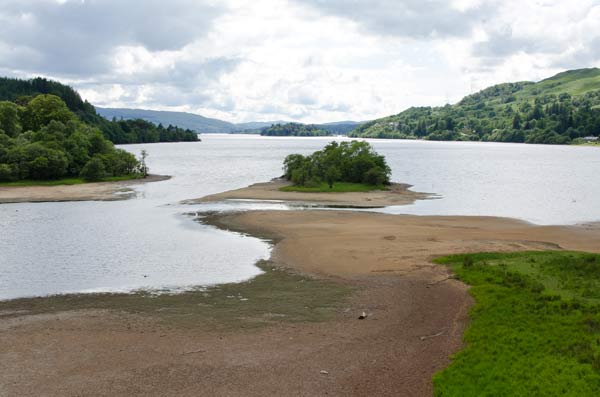
Today, the straggly woods around the castle are home to some sheep.
The sense of place is probably very different in winter, but in the June sun it is a very romantic spot.
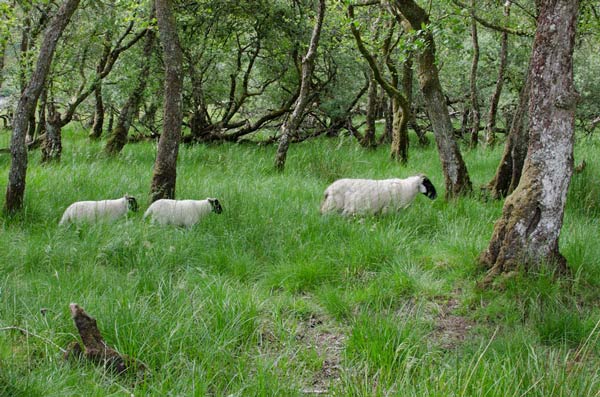
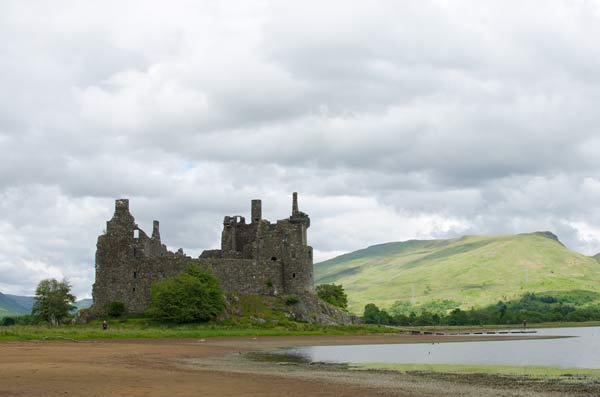
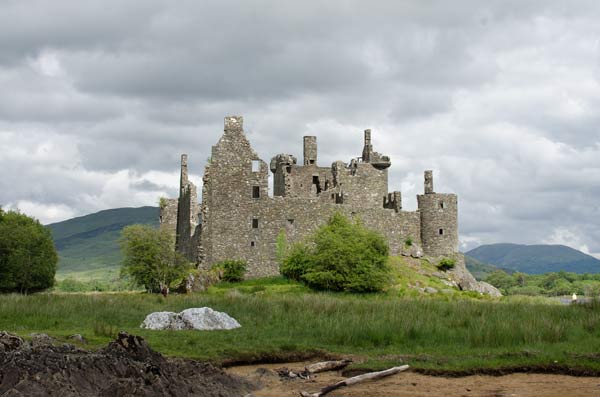
Rocky Outcrops
Around the castle there are jagged outcrops of rock – part of the documented Loch Awe Syncline. This is where the rock strata have been folded and then warn down over the millennia leaving jagged rocks cutting at an angle through the landscape.
The dark rocks in the foreground at the left in this last photo are part of this syncline, as is the white outcrop behind.
No Need To Plan Your Visit
Apart from checking with Historic Scotland that the ruin is open, Kilchurn is the simplest of places to visit. Just turn up and wander around the between the shore, the trees, and the castle.
And breathe in the pleasure of a place far from even the sound of traffic.